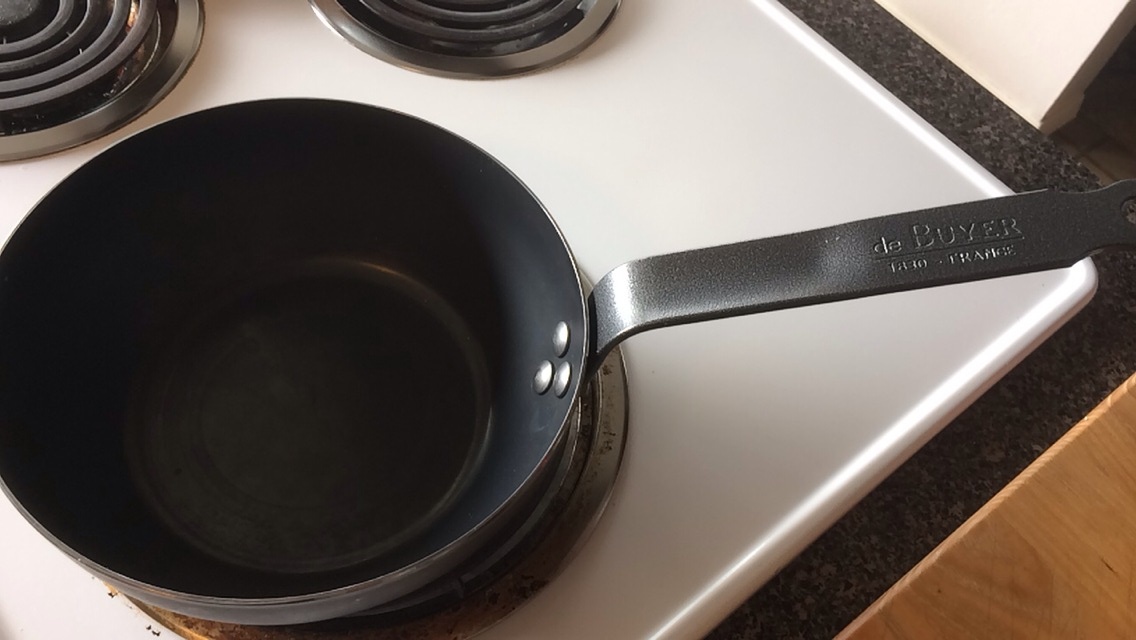
A friend recently received this beautiful French pressed iron pan above as a gift and asked for my advice on how to season and care for it. It occurred to me that other people might be interested in the same info, so I am including it here.
In a traditional French kitchen, pressed iron pans are one of the indispensable tools of the trade. If properly handled, they combine the even cooking characteristics of heavy gauge steel with the non-stick characteristics of a un-coated-but-seasoned pan. They basically fill the role that cast iron does in an American kitchen – cast iron does exist in France, notably the very useful, exterior enameled skillets made by Le Creuset, but it is less common than here. Pressed iron pans are the classic pans we think of when we talk about French omelette or crepe pans. I love them and they make up part of my ideal kitchen equipment list, along with cast iron skillets, enameled iron dutch ovens and stainless or tin lined copper saucepans.
Pressed steel requires a bit more work to season and maintain than cast iron. This is in part because, although there are steps you can take to start the seasoning process off right, they really require time and careful use to get that gleaming black patina that signals the perfect no-stick surface. One month before we opened Cafe Presse, where we were hoping to do a lot of omelettes, I sent each of our saute cooks home with an initially seasoned pan and told them to use them and clean them every day. By the time we opened, we had a set of nicely seasoned omelette pans.
Anyway, here are some notes on how to season and care for press steel pans.
Note that although this sort of pan comes with a factory coating, it is only there to prevent oxidation until you start using it. It is not a replacement for seasoning the pan.
Seasoning:
1) Rub the pan inside and out with a light vegetable oil like rice or or canola (organic is best of course!). Wipe off excess with a paper towel.
2) Put in a slow over, like 190 deg, upside down for 4-6 hours or overnight. In the morning, when the pan is cool, wipe out any remaining oil.
3) Repeat 1) and 2) the next night as well.
At this point, the pan should have a light seasoning, but it will not develop that dark, hard surface except with repeated use and proper cleaning.
Daily Care:
To keep from removing the seasoning, never scrub with steel or plastic scrubber. Do not wash with soap and water.
Instead, after each use, wipe the pan out with paper towel, then put 1 T of kosher salt into the pan and, using an old rag, use the salt to scour out any stuck on food. Wipe out and discard the salt and, then, using a paper towel, put a light coat of light vegetable oil on the inside and outside of the pan before storing.
Also note that deglazing this sort of pan with an acidic liquid (wine, vinegar etc) may take off the seasoning, so if you are planning on deglazing, use a different pan. Lined copper or would be perfect.
It sounds complicated but is really not that bad. Just remember that this is a special pan for a special purpose but not for everything.